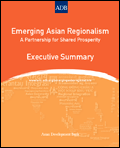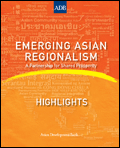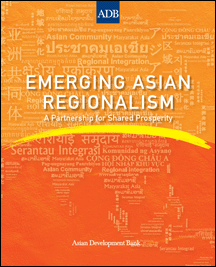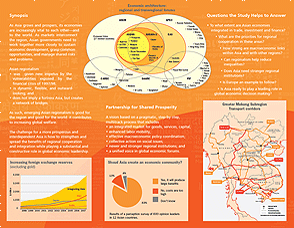|
Synopsis
As Asia grows and prospers, its economies are increasingly vital to each other—and to the world. As markets interconnect the region, Asian governments need to work together more closely to sustain economic development, grasp common opportunities, and manage shared risks and problems.
Asian regionalism:
was given new impetus by the vulnerabilities exposed by the financial crisis of 1997/98;
is dynamic, flexible, and outwardlooking; and
does not imply a fortress Asia, but creates a network of bridges.
As such, emerging Asian regionalism is good for individual economies, good for the region, and good for the world.
|
About the Study
The study analyzes:
the nature of Asia’s emerging regionalism;
the opportunities and challenges it poses.
Led by a team of Asian Development Bank staff, scholars, and advisers to regional policy makers, the study highlights what is at stake and lays out the ground for further discussion on how to move forward.
The key message of the study is that, in an increasingly globalized world, Asian regionalism entails a partnership for regionally and globally shared prosperity.
|
Questions the Study Helps to Answer
To what extent are Asian economies integrated in trade, investment and finance?
What are the priorities for regional cooperation in these areas?
How strong are macroeconomic links within Asia and with other regions?
Can regionalism help reduce inequalities?
Does Asia need stronger regional institutions?
Is Europe an example to follow?
Is Asia ready to play a leading role in global economic decision making?
|












